TP - After graduating from Hai Duong Pedagogical College, Ly Thanh Tram returned to her hometown, Bao Lac district, Cao Bang province, to spread the word. After 6 years of "cultivating people", the female teacher born in 1991 was assigned to Ca Lo school, belonging to Khanh Xuan Ethnic Boarding School, Bao Lac. Ca Lo is a remote hamlet, civilization has not yet knocked on the door, no electricity, no water, no phone signal...
TP - After graduating from Hai Duong Pedagogical College, Ly Thanh Tram returned to her hometown, Bao Lac district, Cao Bang province, to spread the word. After 6 years of "cultivating people", the female teacher born in 1991 was assigned to Ca Lo school, belonging to Khanh Xuan Ethnic Boarding School, Bao Lac. Ca Lo is a remote hamlet, civilization has not yet knocked on the door, no electricity, no water, no phone signal...
At that time, Tram was 26 years old, the mother of a 2-year-old boy. She left her baby with her biological parents and rode a motorbike up the mountain with the Dao children who could not yet speak fluent Mandarin.
Sometimes I cry because I feel discouraged.
 |
Leaders of Bao Lac district, Cao Bang province visited Ca Lo school. Photo: NVCC |
Tram's house is in Xuan Truong commune. The distance from Xuan Truong to Ca Lo school is 18 kilometers. If in the city, this distance is not an obstacle, but in the mountainous area it is a big challenge, even for someone who is used to hardship like primary school teacher Ly Thanh Tram. She said: "The road has been opened but it is still very difficult to travel. 8 kilometers on the national highway is relatively easy, the remaining 10 kilometers have to be traveled while pushing the motorbike. Therefore, I cannot go to school in the morning and return home in the evening, but have to stay at the school, in the office room for teachers." She continued: “Ca Lo is the most difficult place in Khanh Xuan commune. From the commune center to Ca Lo is more than 30 kilometers. Here, some women are illiterate. Men are literate and better educated, so some of them go to work for hire. Women stay at home to pick vegetables, raise pigs, collect firewood, and grow corn. The Dao people in Ca Lo mainly eat corn. They live in stilt houses and communicate with each other in their own language.”
Ca Lo school has 2 classrooms, the classes are combined together, the students are sparse. Tram introduced: "This year, grade 1 only has 5 students. Grade 2 has 2 students. Grade 3 has 5 students. Grade 4 has 8 students". Although she has many years of experience teaching combined classes, she still finds: "Teaching combined classes is difficult in imparting knowledge, while teaching grade 1, the grade 2 students are not focused, doing their own work or looking around and vice versa". The person in charge of Ca Lo school is worried that next year, grade 1 might shrink because if only 1 student comes to school, the class cannot be opened. At that time, parents who want to send their children to school, have to choose another school but it is far from home.
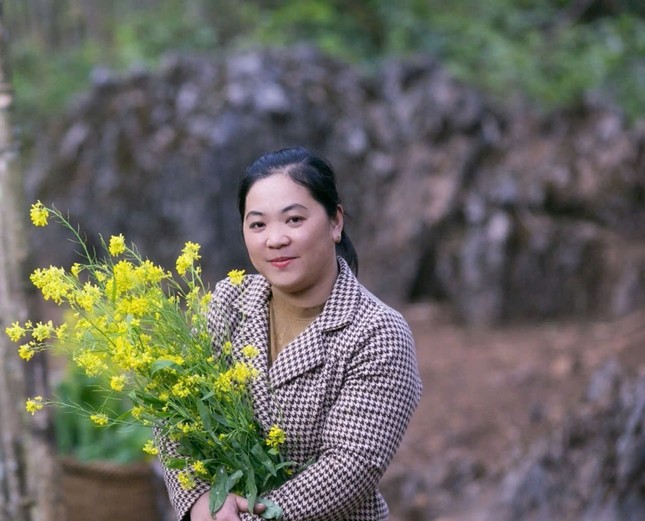 |
Teacher Ly Thanh Tram. |
She said that in Ca Lo, children often go to school by themselves because the school is only about 1 kilometer away from home. But 7 years ago, when Tram first came to Ca Lo, students were very reluctant to go to school. The 9x female teacher recalled the first confusing days: “The children's mealtimes at home and at school are quite different. For example, breakfast at school usually starts from 6:30 to 7:00. At home, they eat breakfast at 10:00 am. Lunch is at 2:00 pm. Dinner is at 9:00 pm. Therefore, at 10:00 am, the children go home to eat and hide, and in the afternoon they refuse to go to school. There were times when I cried because I was discouraged. I traveled a dangerous road to get here with the children but they refused to go to school. Assigned to be in charge of the school, I had to go to each family to persuade the parents to bring the children back to school. But it was not always successful. I failed right from the first attempt.” When will Ca Lo eliminate hunger and poverty if the children refuse to go to school? This concern causes the primary school teacher to lose sleep many nights. Finally, Tram found a solution: Organizing lunch for the children at school. Thanks to this solution, the students' attitudes immediately changed in a positive direction. She analyzed: "If the children go home for lunch, they will skip school in the afternoon, gradually leading to dropping out of school. Having lunch at school helps teachers and students bond more. After eating, the children play in the yard for a while and then go back to school in the afternoon. There is no more excuse to skip school."
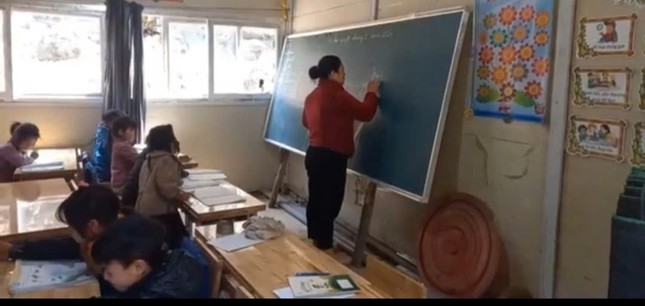 |
Teacher Ly Thanh Tram on the podium. |
For children living in families where members only communicate in their own language, teachers need to be more patient and they must know their own language. Students in Ca Lo are Dao. Ly Thanh Tram is Tay. Bao Lac is a district where many ethnic minorities live together. As a primary school teacher, Tram is forced to learn and study the languages of some ethnic groups. In class, teachers teach "bilingually", speaking both the common language and the Dao language. If the students cannot understand the common language, the teachers immediately switch to speaking the Dao language. Teachers keep using "bilingualism" until the students can listen and speak the common language fluently. The Tay teacher boasts: "Now not only students can speak the common language, some parents can also speak the common language, although their vocabulary is still very limited." In the communication of the Dao people in Ca Lo today, not only Dao language is used but also the common language. This achievement is partly due to the efforts of teachers who stick to poor, remote areas like Tram.
In addition to teaching children, Tram and the primary school teachers here also have to teach them the little things in life. There are funny stories that she will always remember: “Some children wear life jackets in the summer, but wear a thin shirt in the winter. I asked: Aren't you cold when you wear this in the winter? They replied: Not cold. They said that but their bodies were shivering. I had to remind them, wear a thin shirt in the summer, and a warm shirt in the winter. Now they don't do the opposite anymore.” Winter in the border area is often cold, in the 7 years of welcoming winter in Ca Lo, Tram has seen snow fall 3 times.
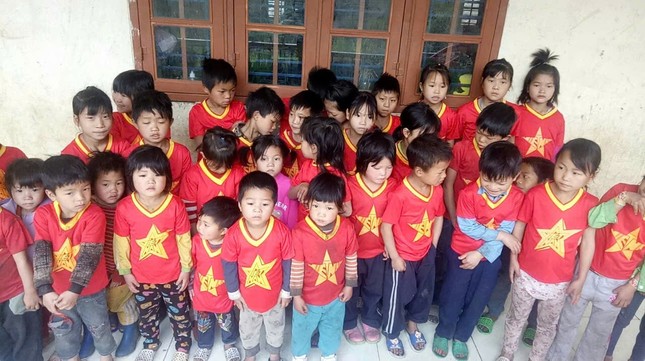 |
Ca Lo children |
I just want the teacher to stay.
When Tet comes, the children at Ca Lo school do not show off their new clothes. Ly Thanh Tram said: “The children wear whatever their parents let them wear, without any demands. There are no new clothes, the old clothes are torn, because their parents only buy their children new clothes every few years for a special occasion. When I first came to Ca Lo, I felt so sorry for the children that I asked some charity organizations for clothes for them. Tram also connected with a charity organization to organize a Tet celebration for the people of Ca Lo. She said: “Not every Dao family in Ca Lo has banh chung on Tet. Only well-off families make a few banh chung for their children. After eating a few banh chung, Tet is over.”
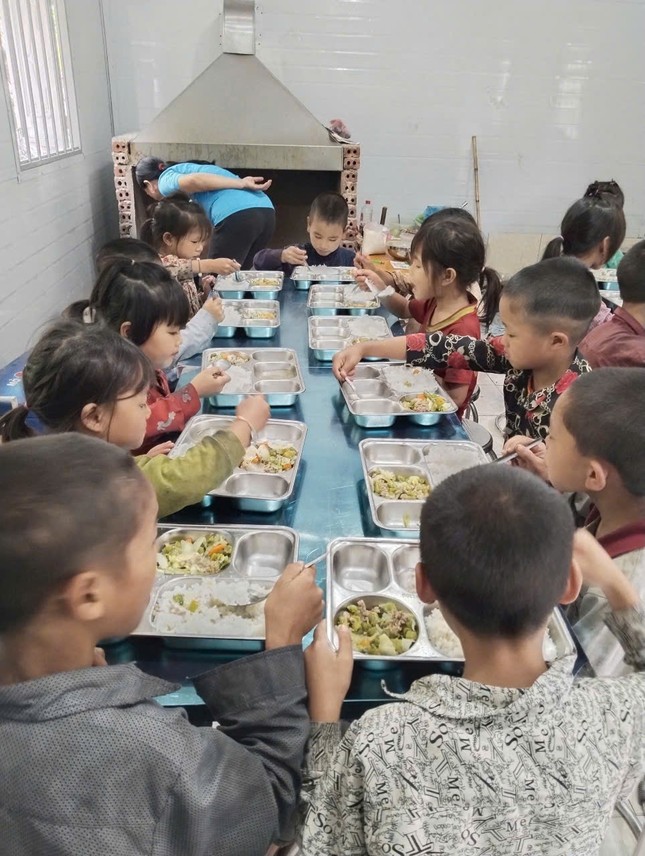 |
School meals of Ca Lo students. |
Although life in Ca Lo is extremely difficult, isolated from the civilized world outside, it is warm and humane. Tram said that when teachers called for help, parents always joined hands. They were willing to help the school repair classrooms and level the floor to make a kitchen. The relationship between parents and teachers is almost like family. Ly Thanh Tram was recently transferred to a school closer to home, where there is electricity, phone signal, and Internet. When saying goodbye, the parents held the teacher's hand and said: "I don't want her to go anywhere, I just want her to stay here." She had just discovered health problems so she could no longer stay. After more than 7 years away from home, Tram's son has entered his teenage years. Tram needs to be closer to her son because she is taking on the role of both father and mother. "I broke up with my son's father when he was young. It was also my fault, I couldn't stay home often to take care of the family and take care of my children like a normal wife and mother," she confided.
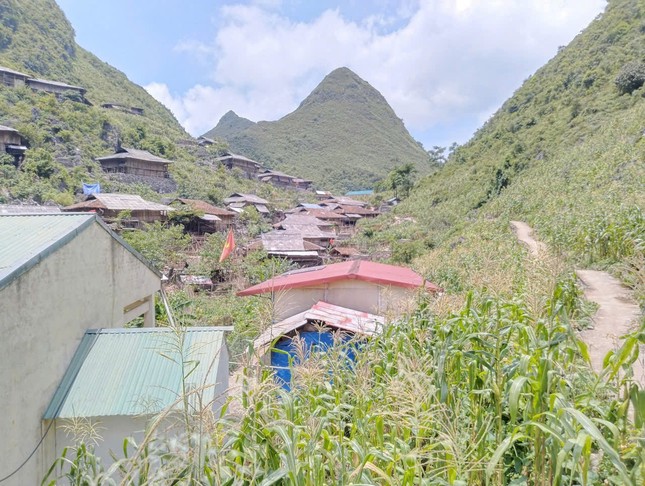 |
Ca Lo Hamlet. |
Ly Thanh Tram confessed: There were times when her spirit was broken, she wanted to leave Ca Lo, leave the Dao children to return to her family. But her parents encouraged her: "Just leave the child behind, we will help take care of him. Things cannot be difficult forever, the roads in Ca Lo will improve, life will get better." Listening to her parents' encouragement, Tram continued to move forward. Life cannot be without faith and hope. Like Xuan Truong commune, where Tram was born and raised, more than 40 years ago there was no car road, no electricity, the cattle pen was built right under the stilt house. Now it is different, Xuan Truong has electricity, Internet, and is also a tourist destination that many visitors from afar come to because of its charming scenery.
After 7 years at Ca Lo school, Tram deeply understands the hardships of the people here. She shared: "There is no tap water here, no water source, we just wait for the weather, when it rains, we can collect a lot of water to have water for long-term use. But if it doesn't rain, every house will lack water for daily use. For example, at this time, it doesn't rain, only fog, people will lack water. To have water, we have to go far away to get it." Teachers at Ca Lo school take many measures to save water as much as possible: "After washing rice, we don't pour the water away, but heat it up to wash dishes. Bathing and cleaning are just quick and easy. If we want to bathe cleanly and comfortably, we have to wait until the weekend when students are off and teachers can go home." To somewhat improve the problem of water shortage, Tram connected with charitable organizations to ask for water tanks. Ca Lo people have lived without electricity for many years, now they have electricity from solar energy. At night, each house has a little light, although not enough to dispel the darkness.
Source: https://tienphong.vn/chuyen-nguoi-geo-chu-o-ca-lo-post1702974.tpo






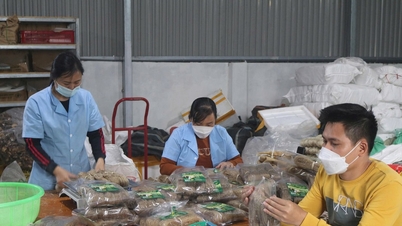








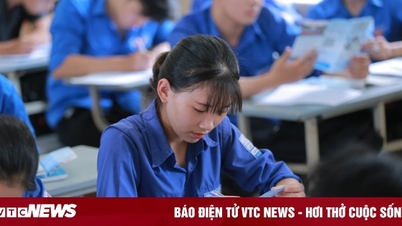





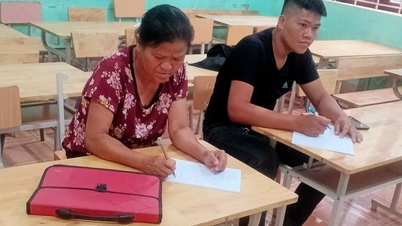































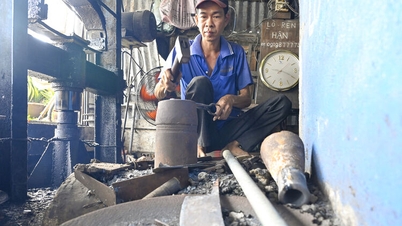

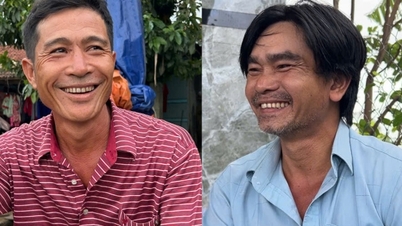










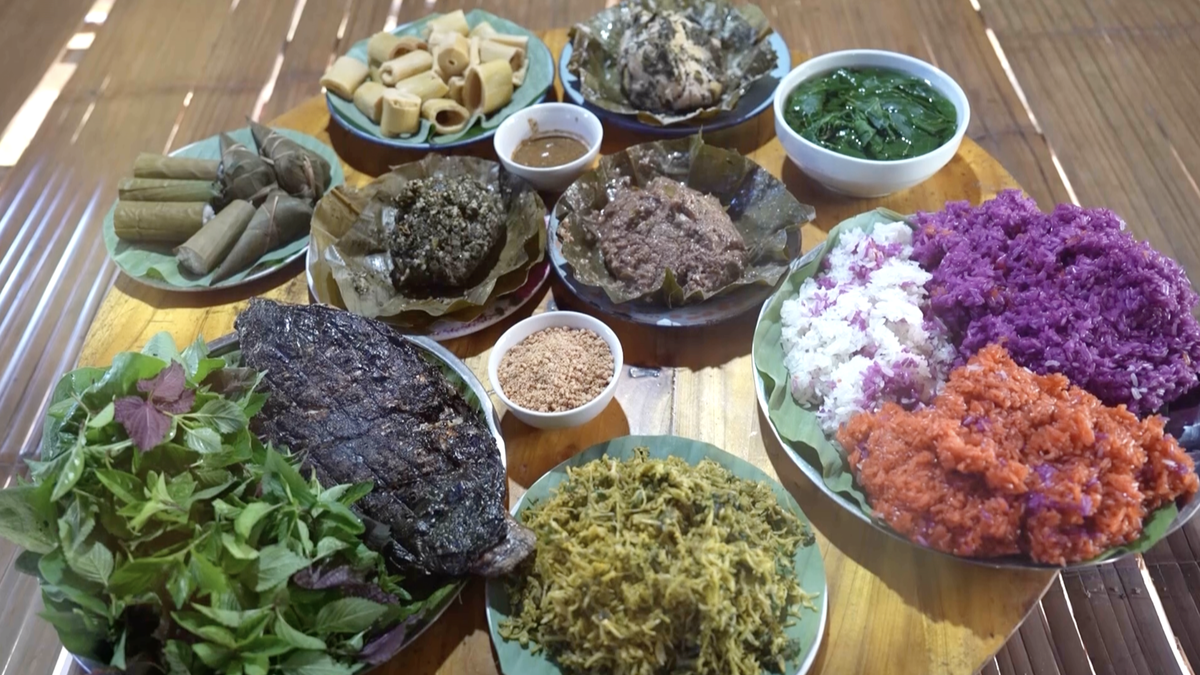
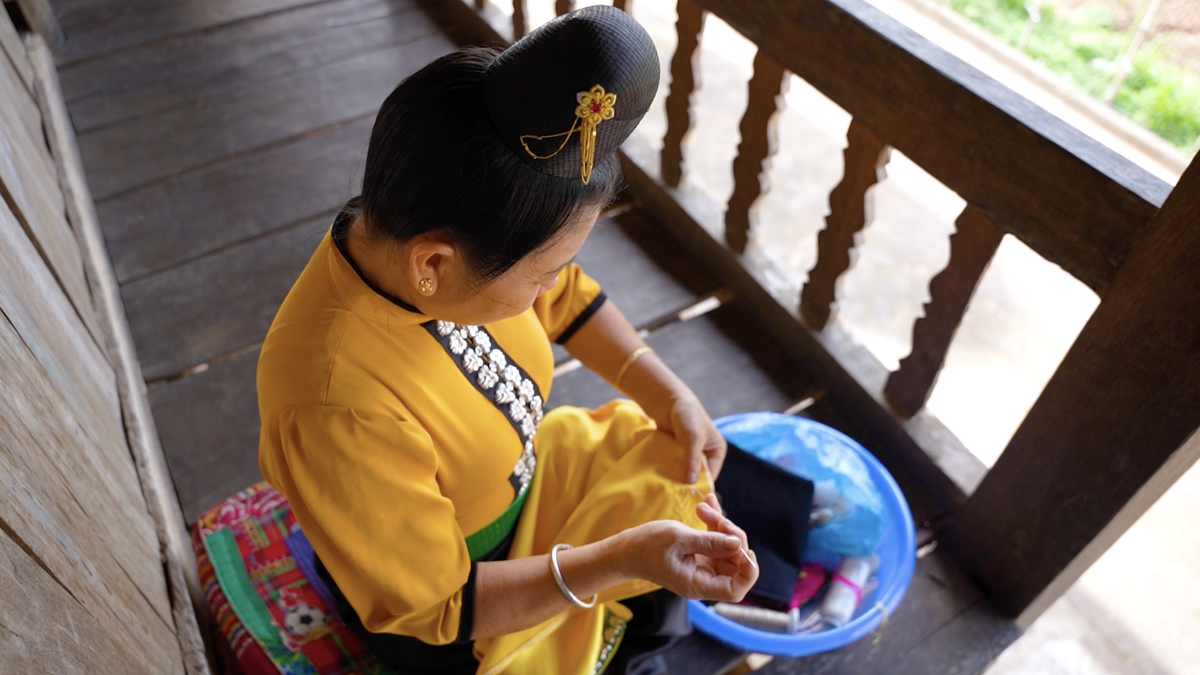



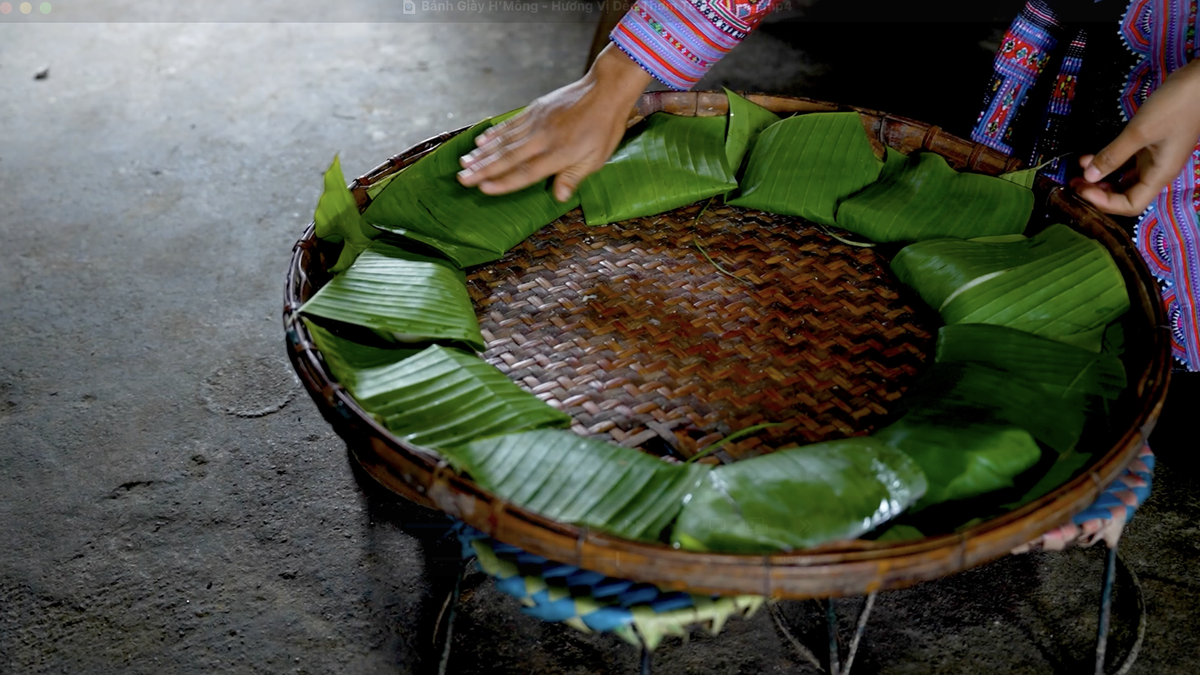

















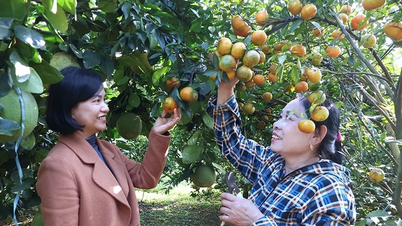

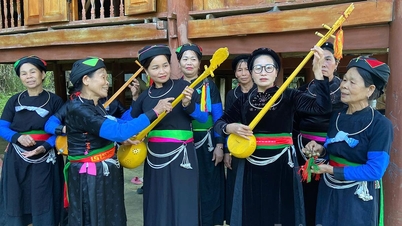



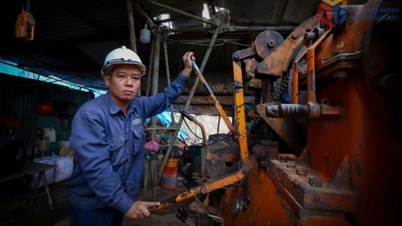





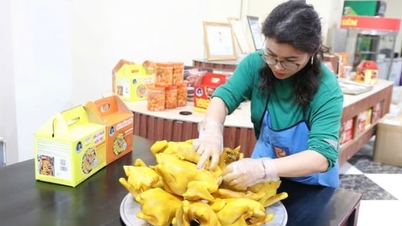





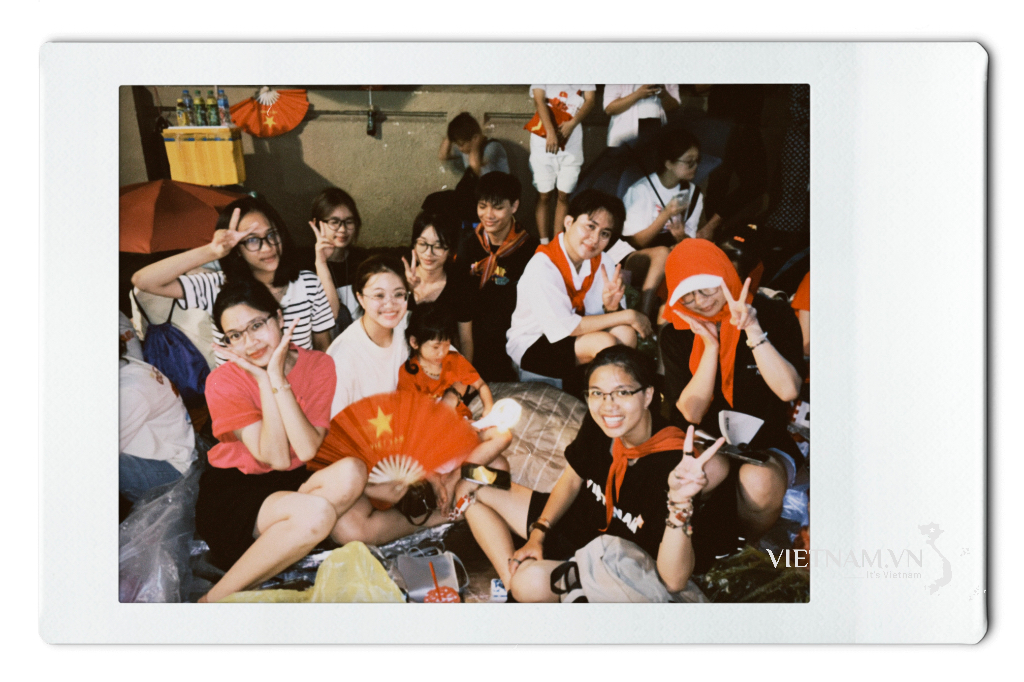


Comment (0)